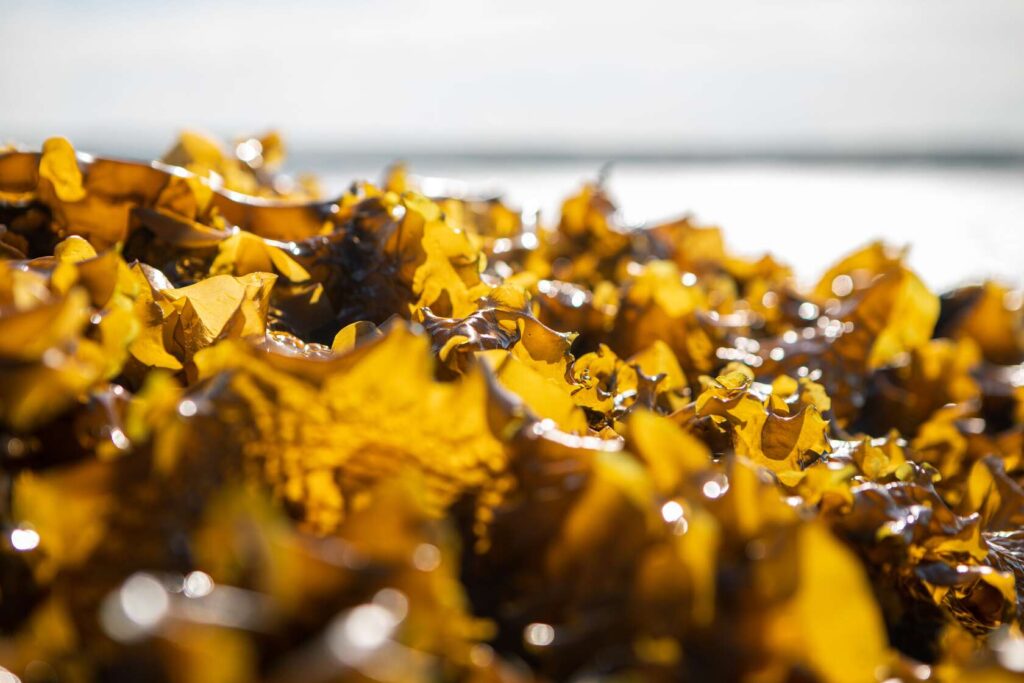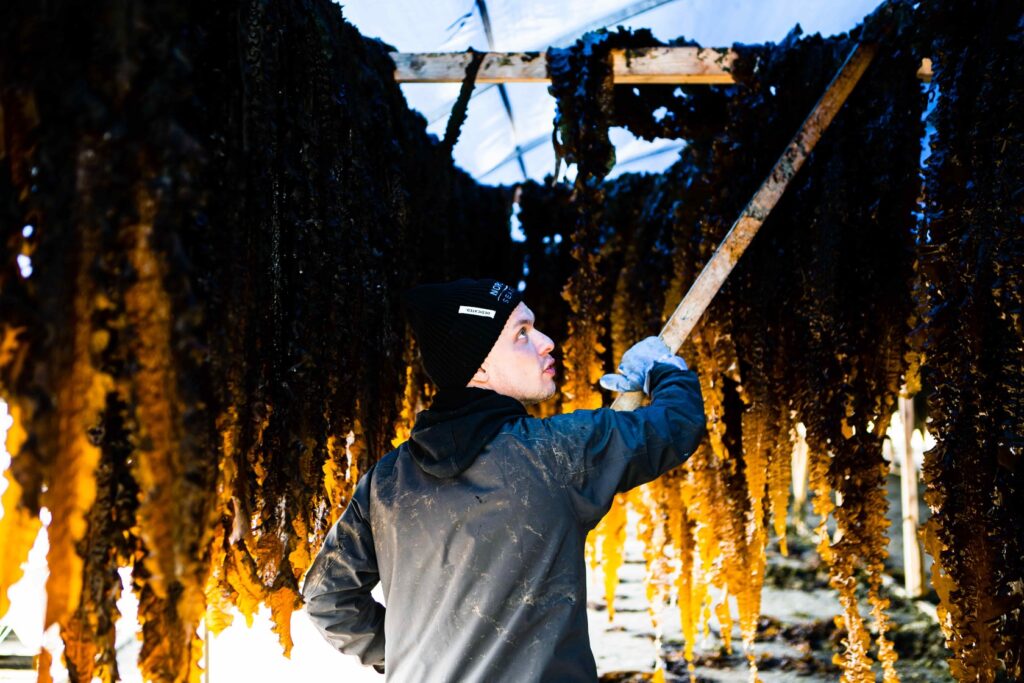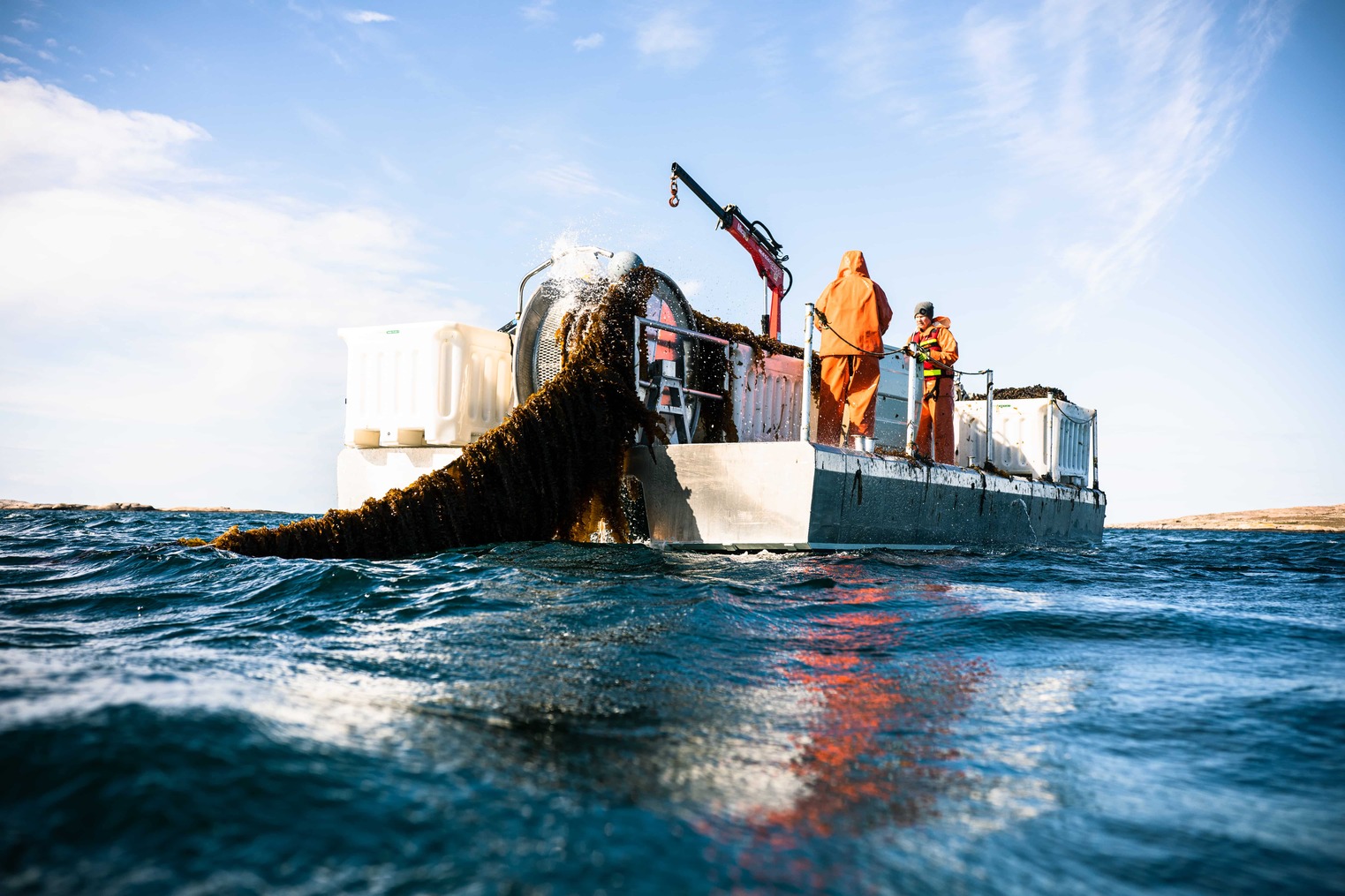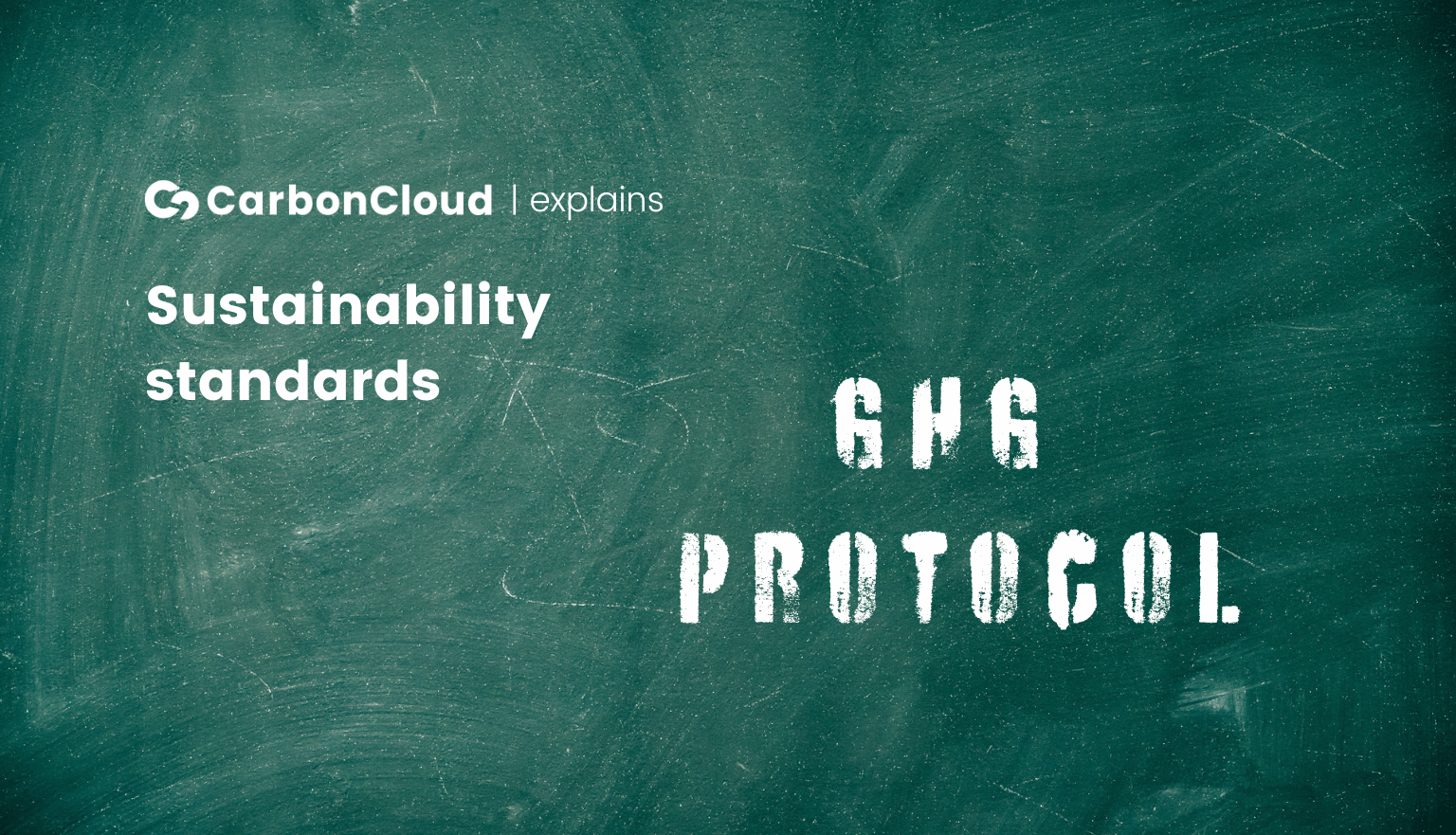Nordic Seafarm: A jack of all trades ingredient, an ace in climate performance
What’s your first thought when you think of seaweed? And no, it can’t be maki rolls! Nordic Seafarm is here to make Nordic sugar kelp the top-of-mind ingredient. Multifaceted, bringing a wave of umami and saltiness, and perhaps most importantly, as sustainable as they come. With a climate footprint of 0.17 kg CO2e, Nordic Seafarm is on its way to take over the market in the name of emissions savings.
Nordic Seafarm was founded by 6 marine biology researchers from Gothenburg University and KTH Royal Institute of Technology. Their research focused on understanding the life cycles of algae and their findings of how to cultivate and harvest sugar kelp at scale were instantly applied. Their primary result, the environmental benefits of sugar kelp as a raw material, was the driver of turning the research into a business.
Nordic Seafarm’s frozen and dried sugar kelp star in Fotografiska’s restaurant, the products of plant-based heroes Peas of Heaven, and the catering trays of the 2022 World Economic Forum in Davos. Today we spoke with Sebastian Larsson, Product Developer at Nordic Seafarm, about their innovative product and the company’s main business driver: Environmental benefits.

World, meet sugar kelp
If your first thought of “seaweed” is the sushi rolls, make some room for something bigger. Sebastian points out that it is helpful to think of marine algae in a similar way to mushrooms. A family with many varieties, each with its own properties, habitat, cultivation processes and life cycles.

To cultivate a seaweed, you need to understand the life cycle of each species. In our case, we needed to understand the “Swedish seaweed” to harvest it. If you compare it with Asian seaweed cultivation, the marine habitat there means you need to tend to the crops more and add fertilizers. Here in the Nordics, we only use the minerals that exist in the water.
The applications of sugar kelp have an exciting range. It can be used as flavoring, mineral boost, or substitute for common ingredients in pesto, salads, and anything that is in dire need of a climactic umami flavor.
- Uncertainties like “how do you measure? How do we measure?” are removed from the discussion. When you have the same rules for calculating the climate footprint, then there is no doubt
Now meet its climate impact!
As Sebastian explains, the marine experts at Nordic Seafarm already knew how beneficial for the climate sugar kelp is and finding a commercial application for these benefits was a key propeller. Then, putting that into numbers and sharing it with the world in an accessible, robust way was the immediate next step.
There is already a lot of research about the environmental benefits of sugar kelp. However, we needed to prove just how beneficial it is and how to be able to explain the switch to sugar kelp and the impact of it. Also, considering how often we look at carbon footprints as a consumer at the stores, we realized we wanted to work with the climate footprint of sugar kelp – and with a certified party.
It was more about realising that we should work with the climate footprint and not with who. Working with CarbonCloud was the clear choice – It seems perfect given CarbonCloud’s focus on the food industry, the database, and the fact that our products on ClimateHub can serve as a lead generation platform.

Sailing on the ingredient route
As we have also heard from Planet A Foods, the B2B/ingredient route is the chosen path for those who want to make the largest possible impact with every transaction. Nordic Seafarm took the ingredient route to serve as a resource for food companies. But Sebastian shares another realization: Food companies are already keen to source seaweed because of its environmental benefits. And that is how Nordic Seafarm brings the point home:
When a food company is looking to compare ingredients with potential substitutes and you the same ground for comparing, then the benefits become very clear. Uncertainties like “how do you measure? How do we measure?” are removed from the discussion. When you have the same rules for calculating the climate footprint, then there is no doubt..
Sebastian describes one of the most prominent issues in sustainable sourcing for the food industry: The theoretical debate on how to calculate climate impact. However, the solution is evident to Nordic Seafarm and it’s a go-to point in their arsenal.
When you have comparable data, then it's easy to point out the differences, compare, and ultimately buy. Essentially, it is easier to take the decisions many companies are talking about: exploring the exciting options in sustainable sourcing and becoming better.
When we meet food companies, we of course talk about taste, texture. Then, we can also use ClimateHub and CarbonCloud calculations to add another dimension: When you choose alternative A, you get this climate footprint. When you choose this Swedish marine crop, your climate footprint gets this much better.”

The proof is in the numbers
Our natural first reaction was to ask how the food industry executives react to Nordic Seafarm’s emissions data-bombing. As Sebastian explains, Nordic Seafarm’s climate discussions with the food industry are smooth sailing.
Many people already know that seaweed is environmentally beneficial – a big part of our story is built around this theme anyway. But especially when it comes to sharing our CarbonCloud data, they already know CarbonCloud and it becomes a trustworthy data source – especially among product developers. We never get the question “how did you calculate this?” or “how did you come up with this number?” because they know that it comes from a company that are experts in the carbon footprint field.”
Newsletter to-go?
Our special today is our Newsletter, including snackable tips, hearty climate knowledge, and digestible industry news delivered to your inbox
A climate strategy sea lane
Sebastian lives and acts his own quotes. As the main user of the CarbonCloud platform, he takes emissions data into account when he is developing the product.
Our first step is to realize our footprint. We have robust data on where we are now and we can see what’s good. For example, the crop itself is very climate-friendly. But we can also see what can be improved and what we should prioritize. For example, we need to continue working with our packaging – that became so clear, it was hard to not think about it. So, improvements are the second step.”
The food industry is en route to the treasure island of reduced climate footprints and the route there is paved with Nordic Seafarm’s sugar kelp. Here be no dragons, just a data-backed climate-optimal ingredient that takes land use out of the map!
Related Posts
Sustainability Standards Explained: GHG protocol
Food and beverage producers, retailers, you and we at CarbonCloud have the same headache: There is currently no universally agreed-upon standard for sustainability. There isn’t a week going by where
CarbonCloud raises €7.5 million in Series A to become the food industry’s leading climate intelligence platform
CarbonCloud, the climate-tech SaaS solution for the food industry secured €7.5 million to expand their market position as the leading climate intelligence platform. The financing round was led by Cu
Food industry & Scope 3: A state of the art of food supply chain emissions
Scope 3 emissions are taking (rightfully and finally) center stage and the food industry is talking the talk. Since 2016, Scope 3 disclosures from food companies in CDP have increased by 113%. With mo
Planet A Foods sells 92% CO2e savings – and the food industry is buying
One could say that Planet A Food’s main product is CO2 savings. One could say that, if Planet A Food’s flagship product, Nocoa, wasn’t taking over the confectionery world. Planet A Food’s oat







